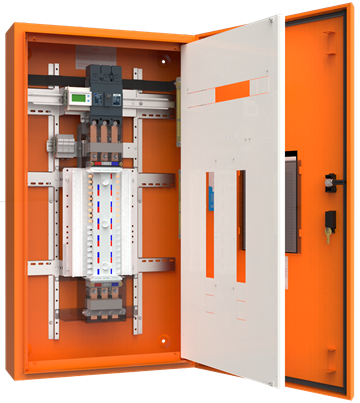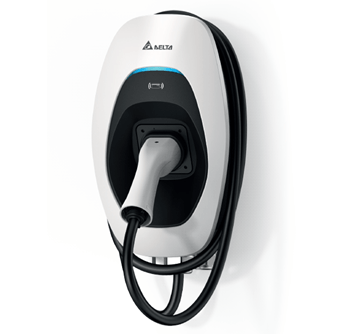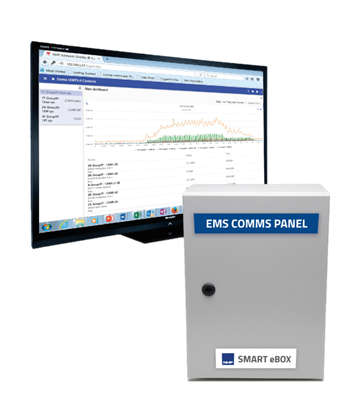It is that time again – the new National Construction Code 2022 is now in effect, which includes new requirements for renewable energy equipment, electric vehicle charging and battery systems.
The Australian Building Codes Board produces and maintains the NCC on behalf of the Australian Government and each state and territory government. Its purpose is to outline the minimum performance-based requirements for a new and refurbished building’s safety, accessibility, health, amenity and sustainability. In this iteration of the NCC, Section J8 ‘Facilities for energy monitoring’ has been moved to Section J9 and renamed ‘Energy monitoring and on-site distribution of energy resources.’
This new section adds requirements for electric vehicle charging equipment, solar panels and battery systems within buildings. This also necessitated the addition of requirements for monitoring additional load.
New criteria in Section J9D3 ‘Energy monitoring’ now require the recording of individual time of energy data use for on-site renewable energy equipment, electric vehicle charging and battery systems. The energy data gathered from this equipment must now be centralised onto the same single monitoring user interface as the rest of the loads on site.
What does this mean for energy monitoring?
A single-user interface must be able to collate information from various types of energy meters/equipment. This includes loads such as HVAC, lighting, power, central hot water, internal transport and other ancillary plans, as well as the new addition of on-site solar, EV charging and battery systems.
The information captured must be time-stamped (i.e. energy consumption recorded with reference to time and date). Ideally, the information captured should be easily identifiable (i.e. loads outlined in J9D3 should be grouped and/or labelled appropriately within the single user interface).
The single-user interface must have the facility to store energy consumption information for a reasonable period of time (data storage capacity is not specified).
Find out more about energy monitoring solutions.
What does this mean for electric vehicle charging equipment?
Electrical distribution boards dedicated to electrical vehicle charging are now required in accordance with Table J9D4. The distribution boards are required to have the capacity to support the delivery and monitoring of the minimum power specified in J9D4 (2).
Time-stamped energy data collected from EV charging needs to centralised in the same user interface as the energy meters from other individual loads on site.
What does this mean for solar photovoltaic and battery systems?
For new buildings without solar and battery systems at the time of completion, the main electrical switchboard is required to contain at least two empty three-phase circuit breaker slots and four DIN rail spaces labelled to indicate the use of each space for solar system and battery system. These empty spaces must be sized to accommodate the installation of solar photovoltaic panels producing their maximum electrical output on at least 20% of the building roof area.
How to comply to the NCC section J9D3
NHP has worked diligently to help provide seamless solutions for NCC compliance. A wide range of energy meters is available through NHP to monitor all types of loads within your building. Communication options such as MODBUS and BACnet are available across the NHP range of energy meters. All of NHP’s energy meters can fit into our Concept Plus distribution boards.
Concept Plus single, double or triple-metered distribution boards are fitted with NHP’s dual energy meter EM270, which is capable of monitoring 2 x 3-phase loads or 6 x single-phase loads within the single meter. This means that individual branch feeder subcircuits metering for light, power and HVAC (or any other load metered sections) can be done within the one distribution board and exported for reporting and centralisation. For greater granularity, the WM50 branch circuit energy meter can monitor up to 96 circuits from the single unit, giving the option to monitor energy usage down to a single circuit and appliance.
NHP Concept Plus distribution boards have standardised models specifically dedicated for electric vehicle distribution. They can fit up to 24 single-phase chargers and options are available for three-phase charger versions or a mixture of both.
Elegantly designed, flexible, practical, efficient and fast, the Delta AC Max 22kW is a market leader in both function and appearance and is well suited for both commercial and residential requirements. It is a single and three-phase compatible EV charger in one, meaning greater flexibility. Input wires can enter the charger from various points, enabling easier installation, regardless of concrete walls, plaster/timber walls or steel posts.
The Delta AC Max Smart also includes an in-built modem with Ethernet/Wi-Fi/SIM card slot connection types. This enables the charger to have the communication capability to remotely track its energy usage and send the data to centralised user interface such as NHP’s SMART eBOX.
The SMART eBox takes the guesswork out of centralising all the energy monitoring devices to a single user interface. It can be utilised as a datalogger, gateway or controller for various meters, environmental sensors and other SMART power distribution devices via Modbus (RTU or Ethernet). It can also operate as a BACnet/IP gateway, seamlessly integrating any Modbus capable device into a Building Management System. The SMART eBox is built and commissioned by NHP, which means by combining with NHP’s metered panelboards, it becomes a flexible, easy-to-use and quick-to-install solution that ticks all the boxes for Section J9D3.
For more information, please call your local NHP Account Representative or email us:
Australia 1300 647 647 nhpsales@nhp.com.au


